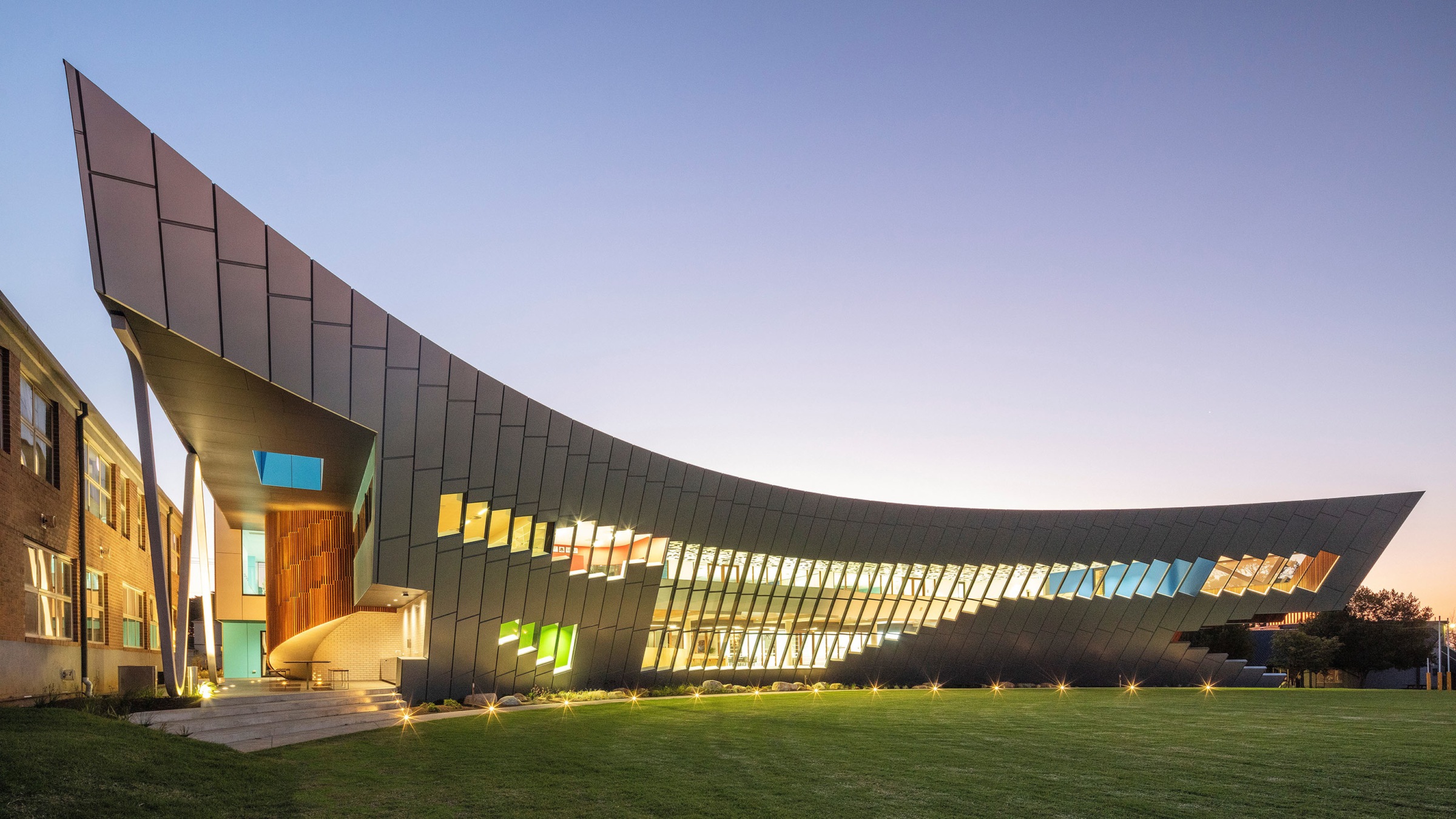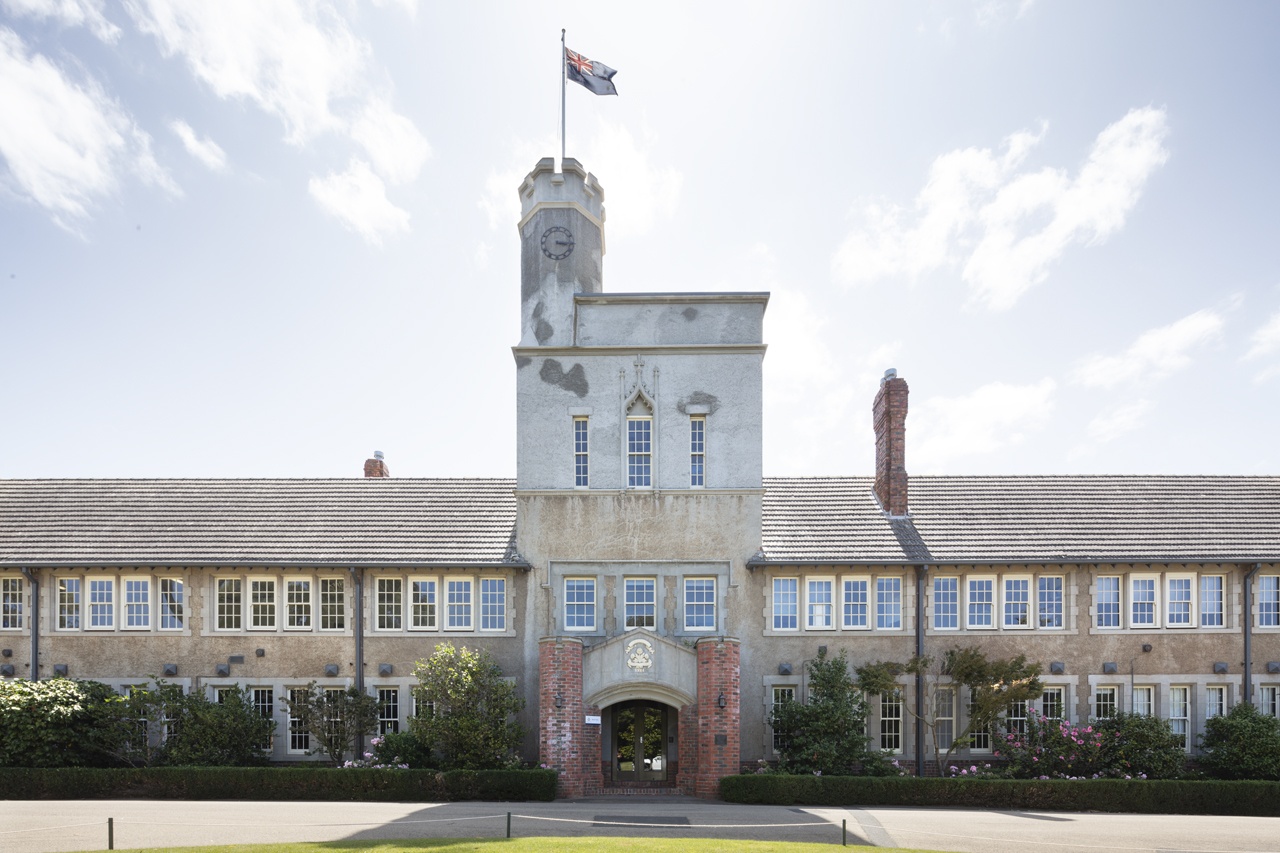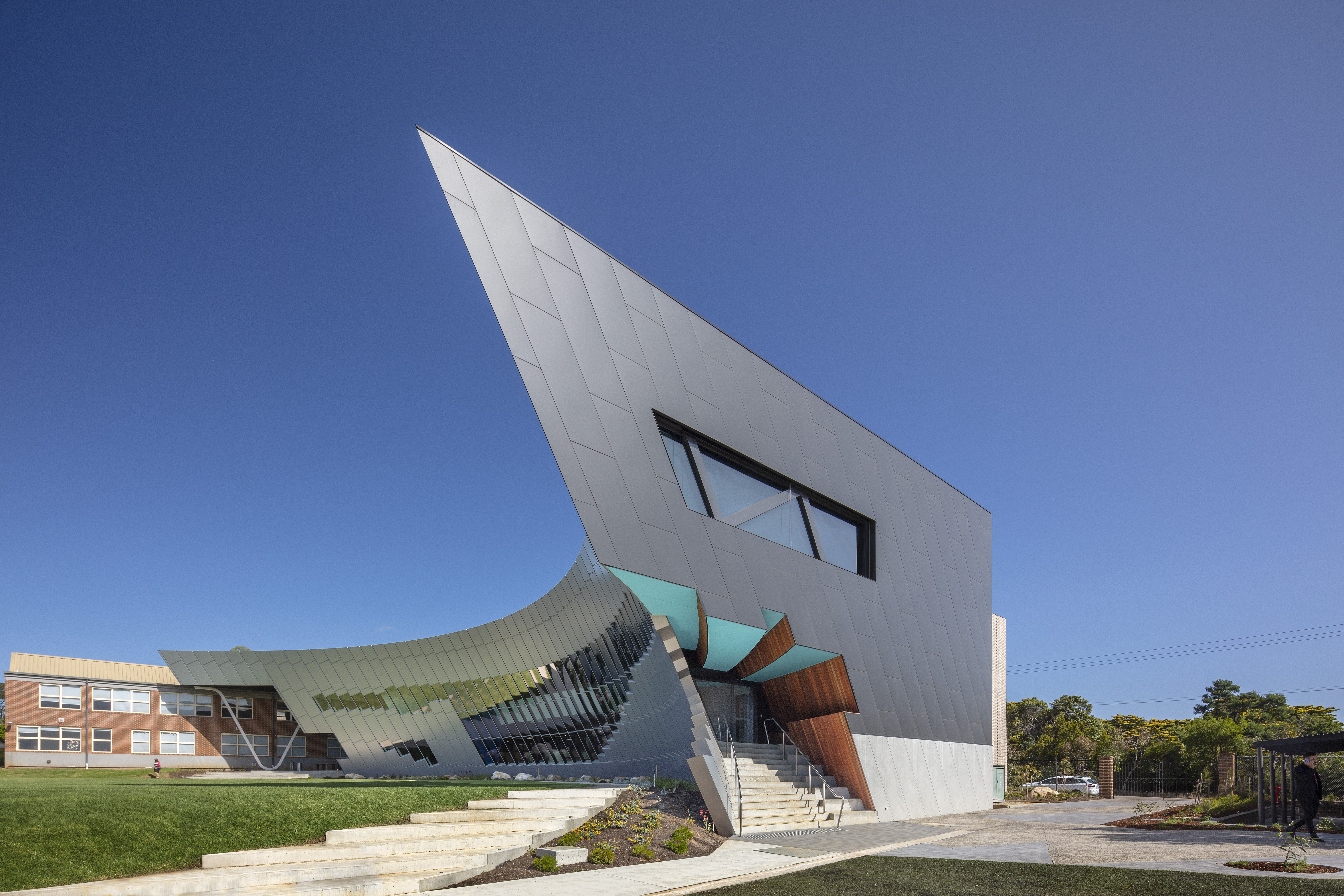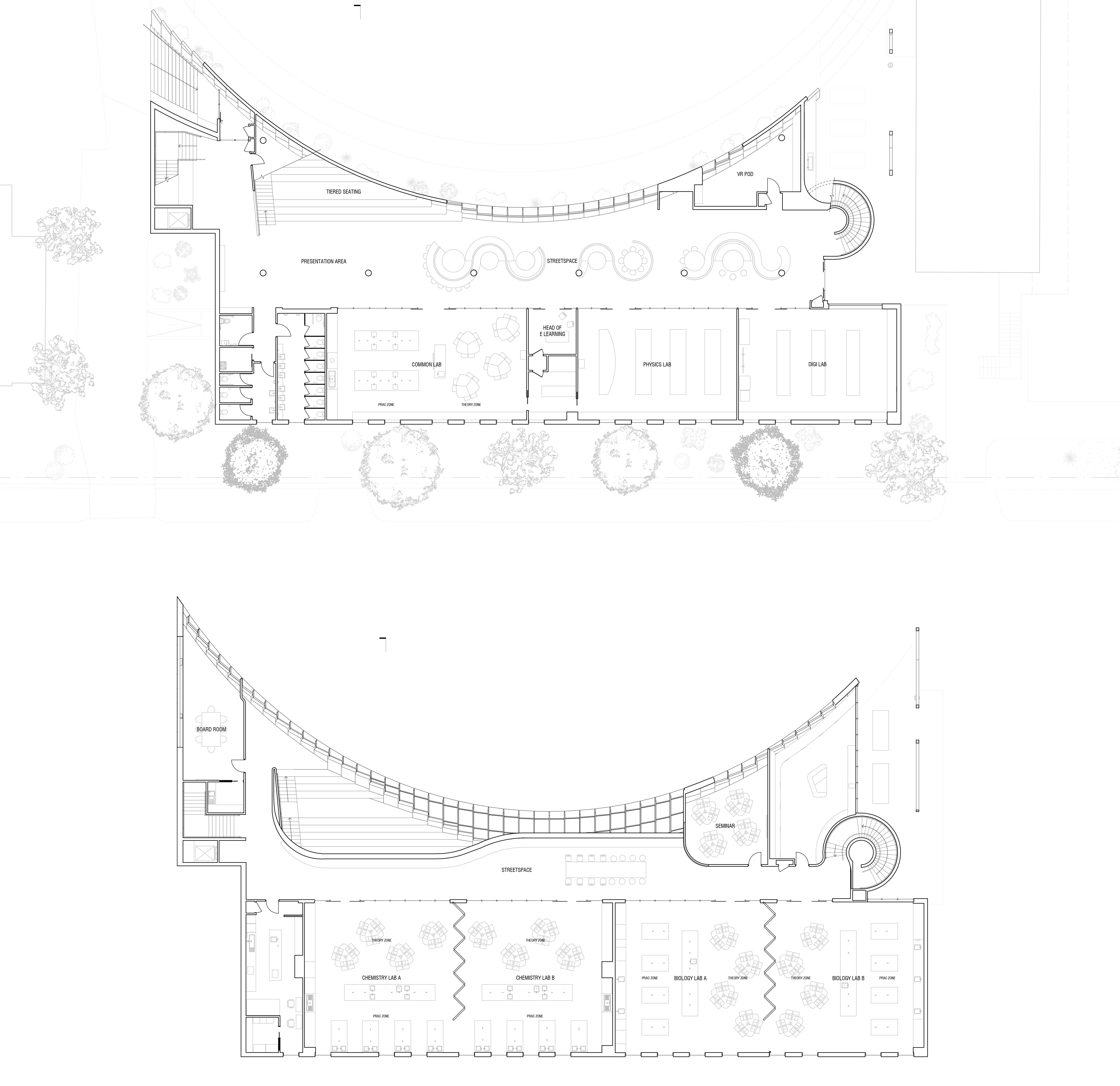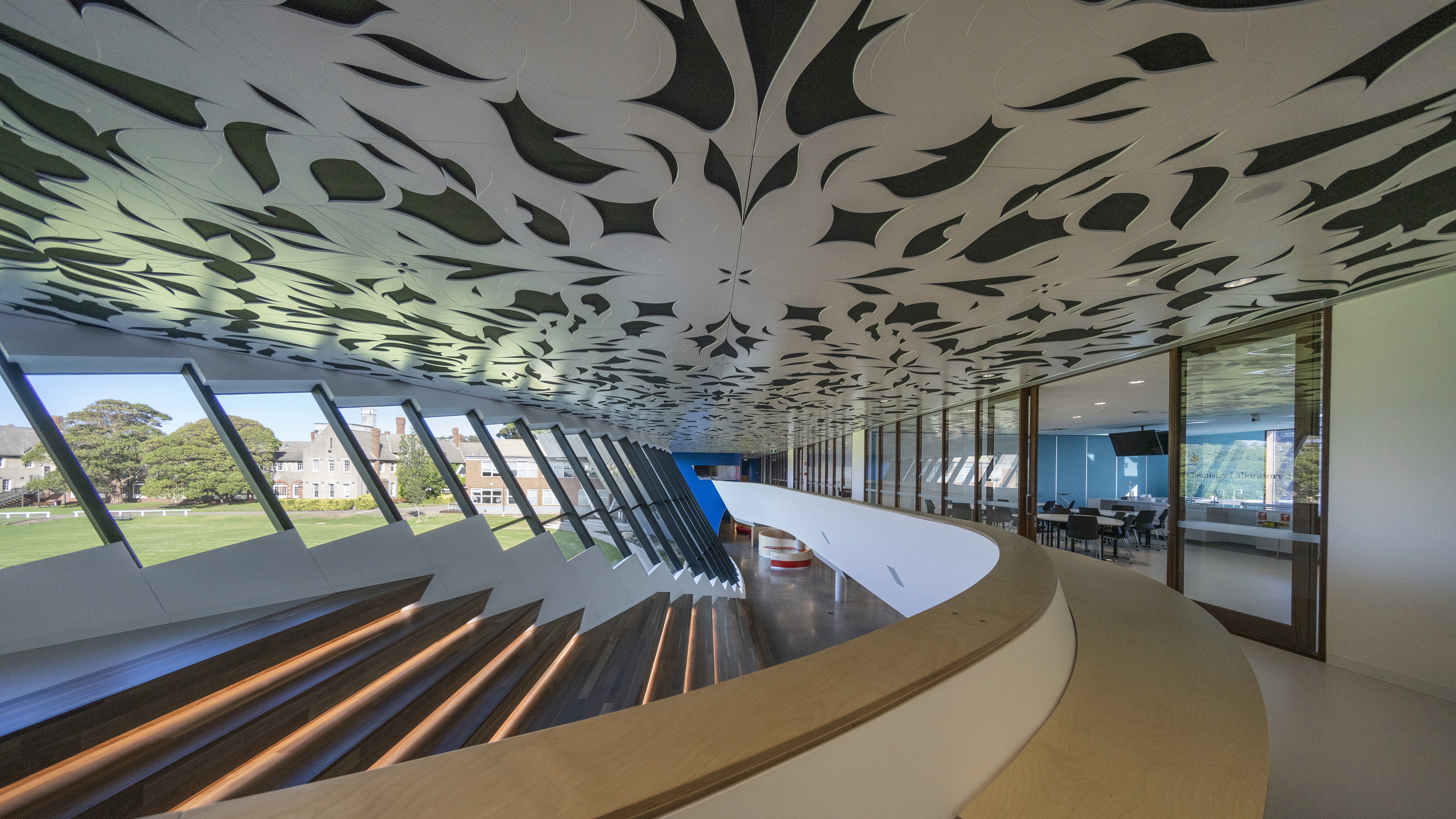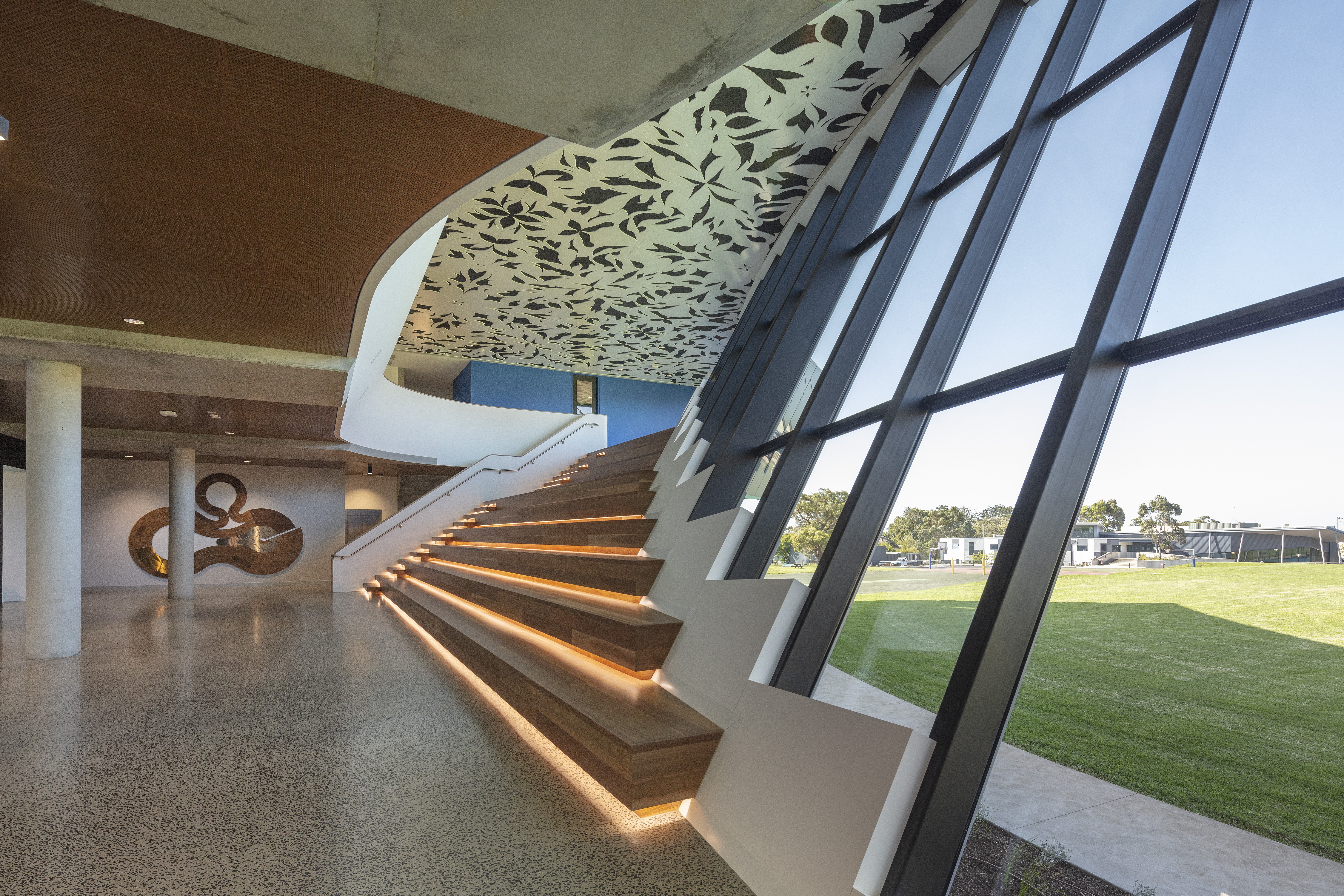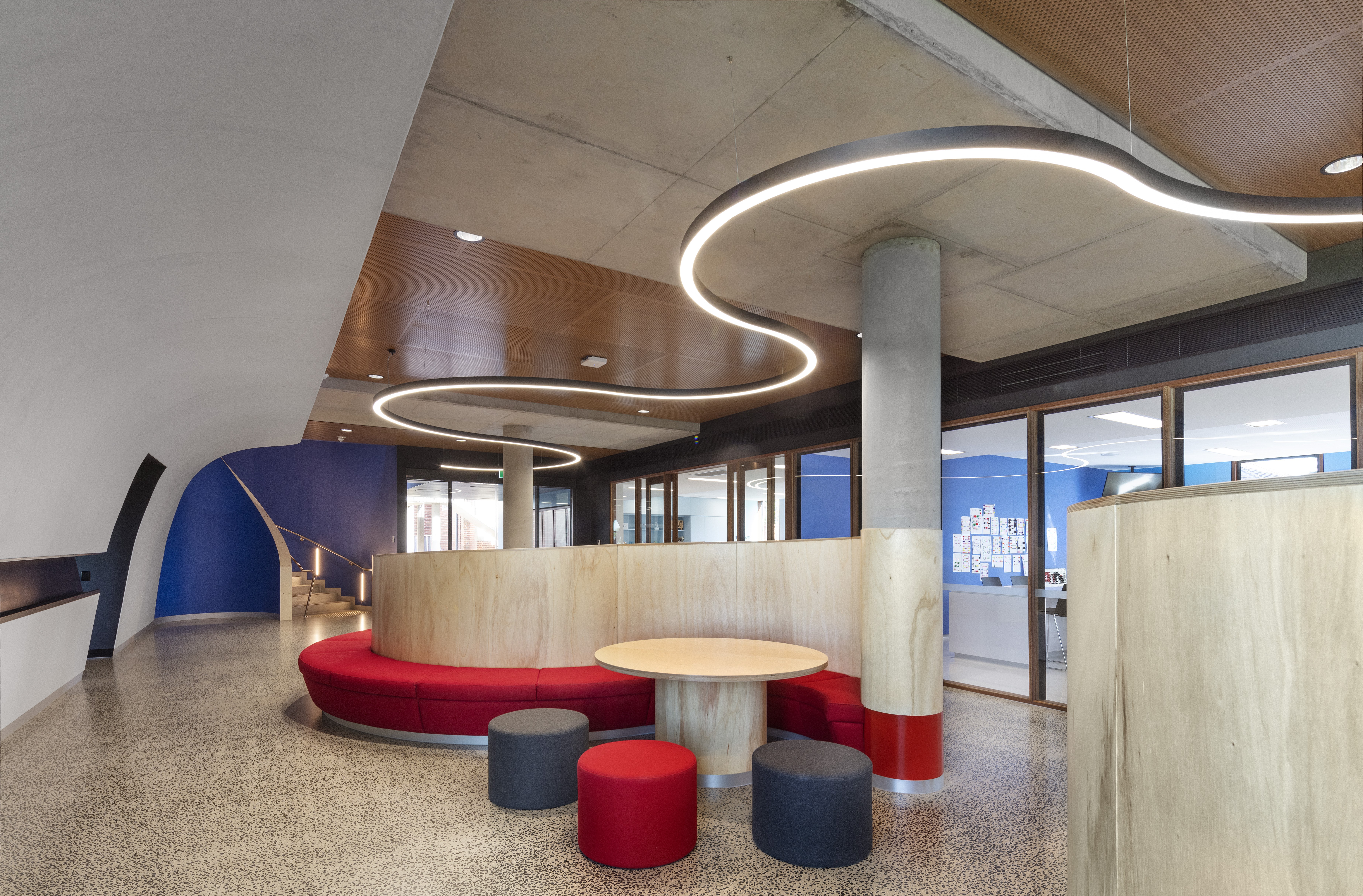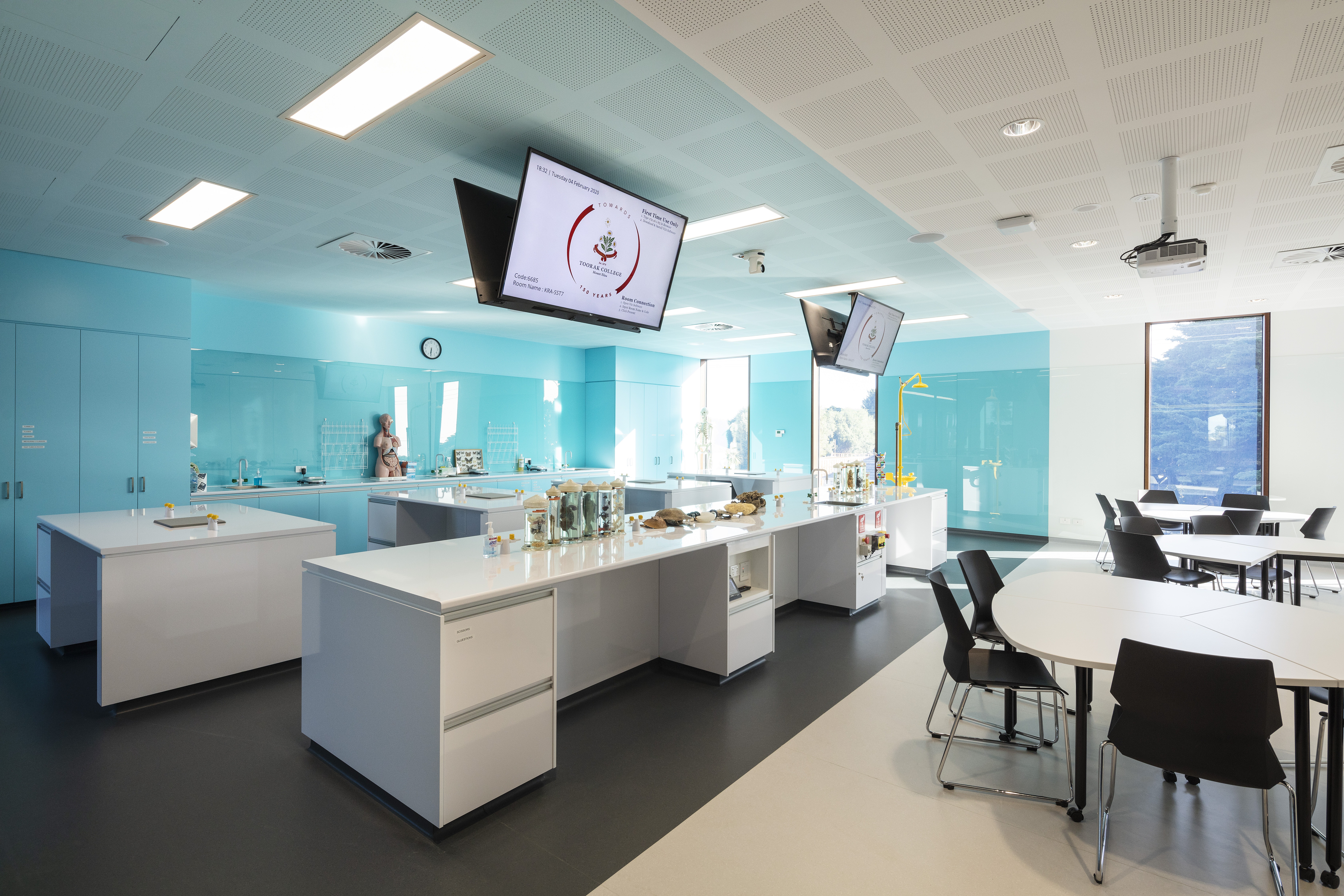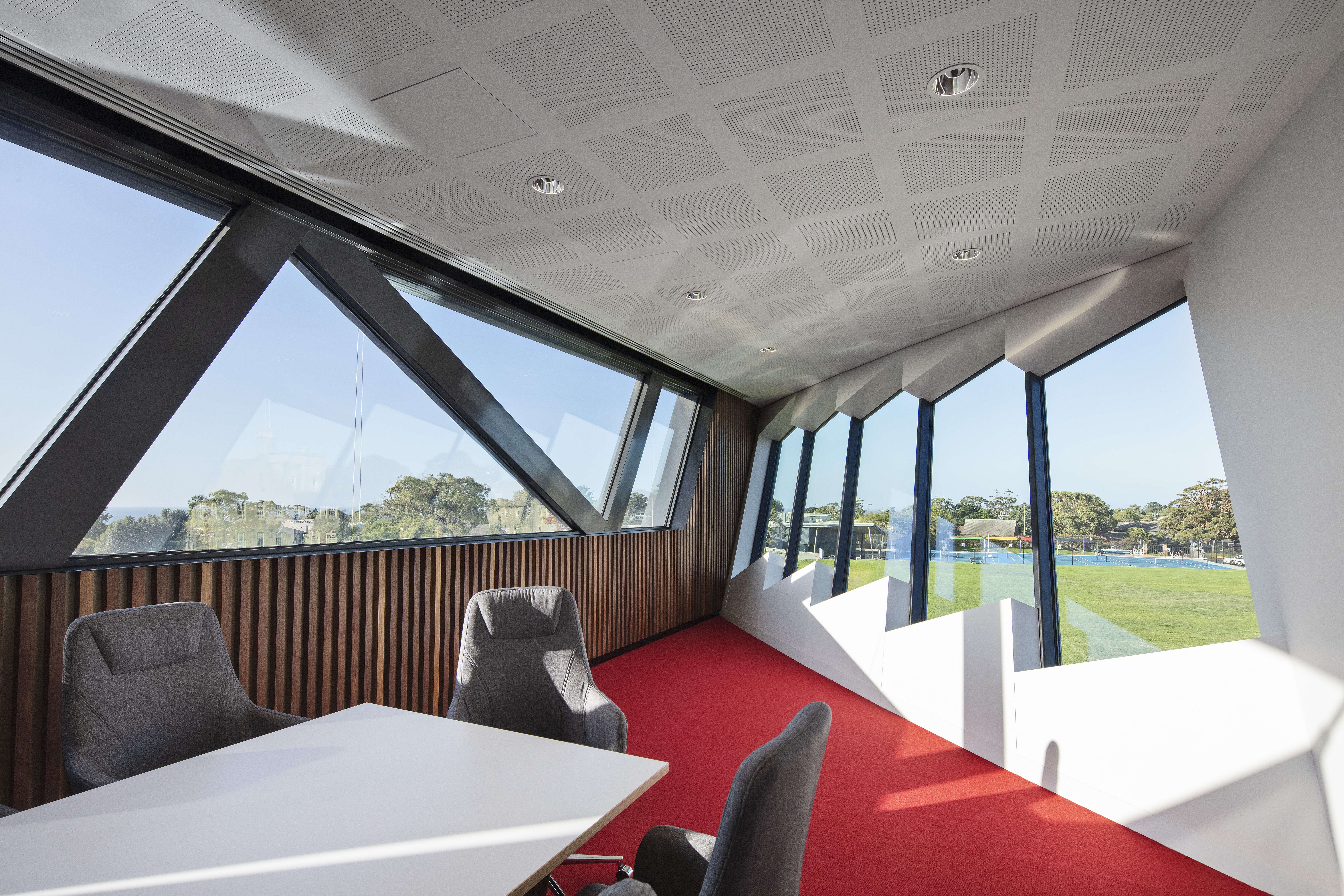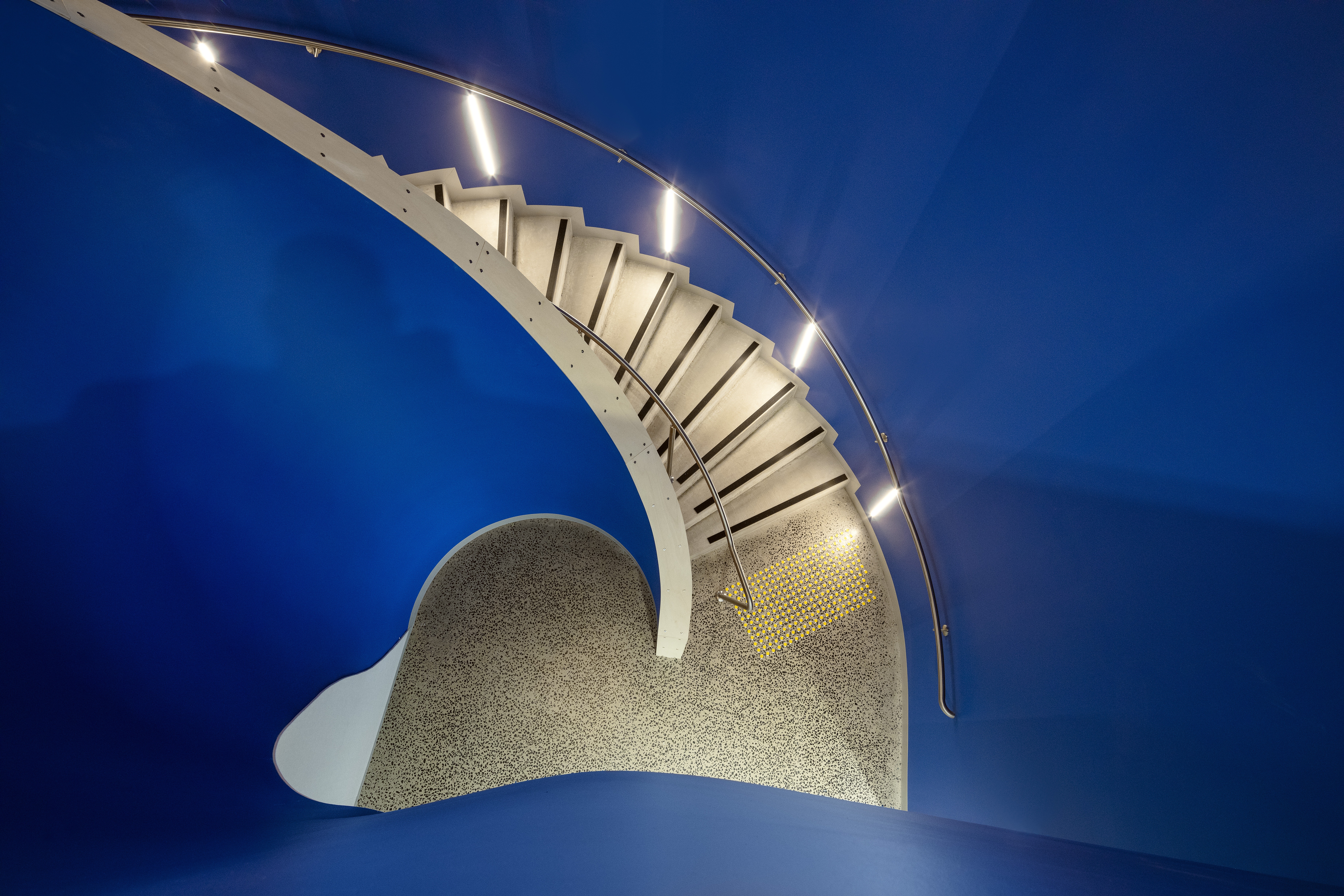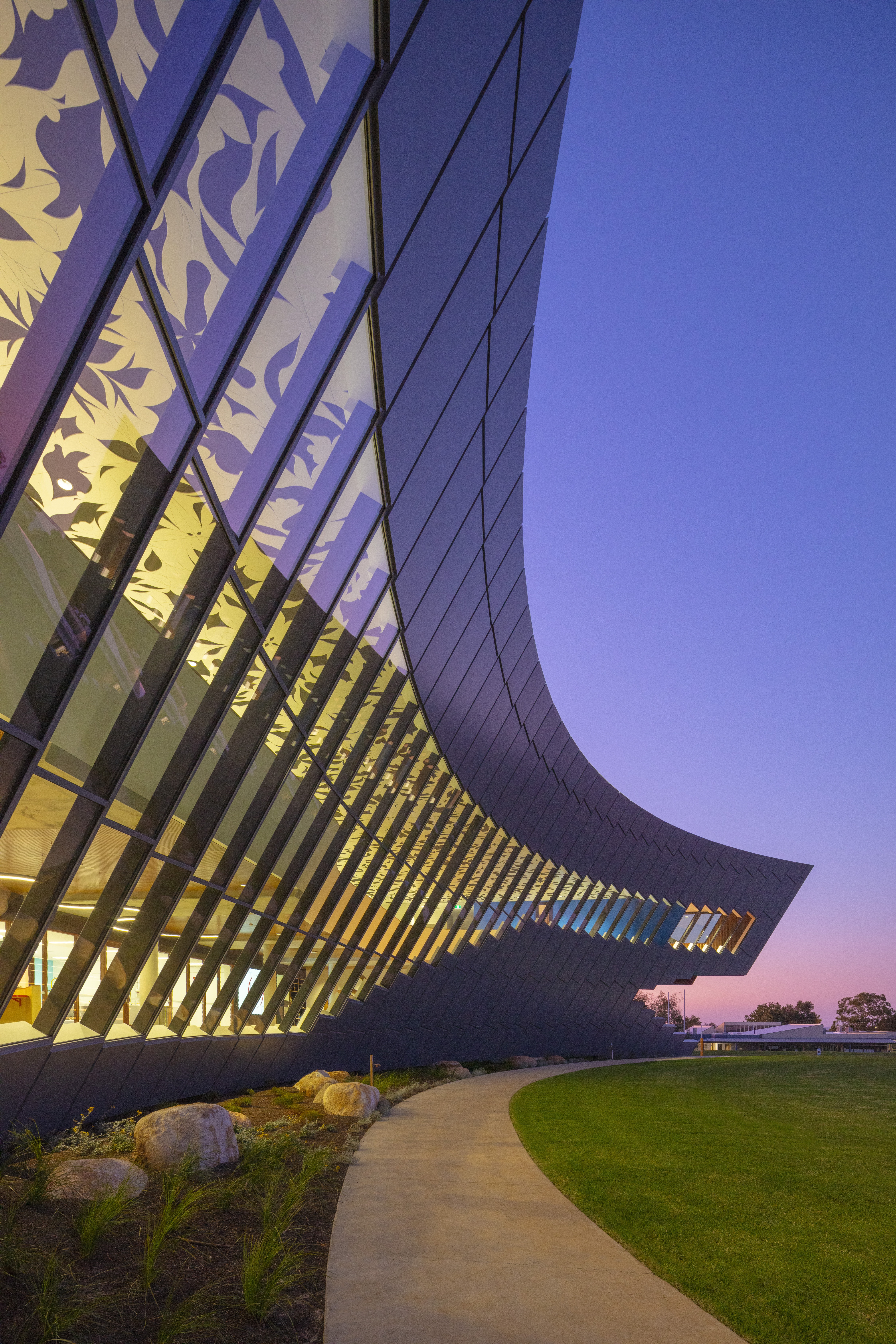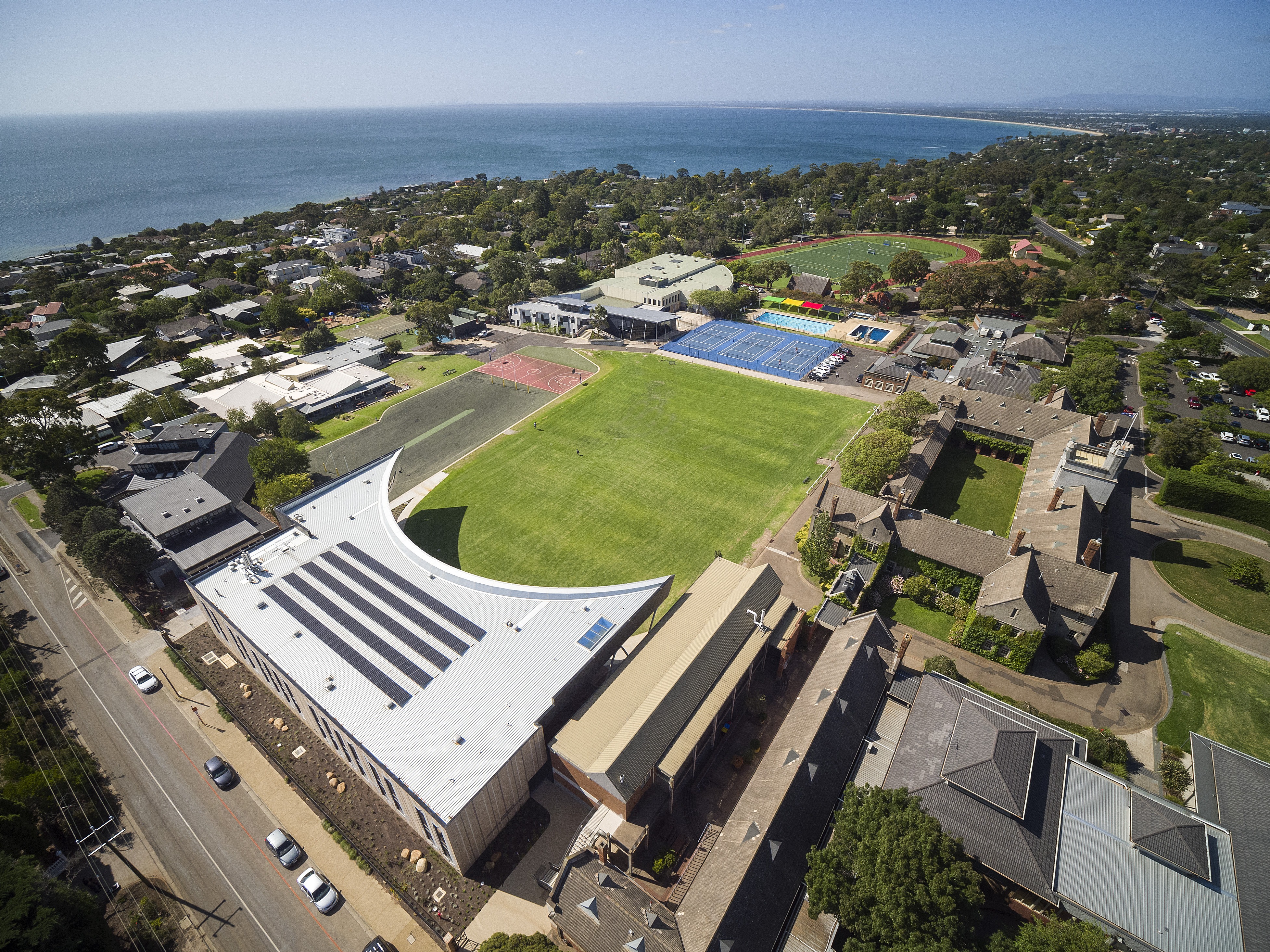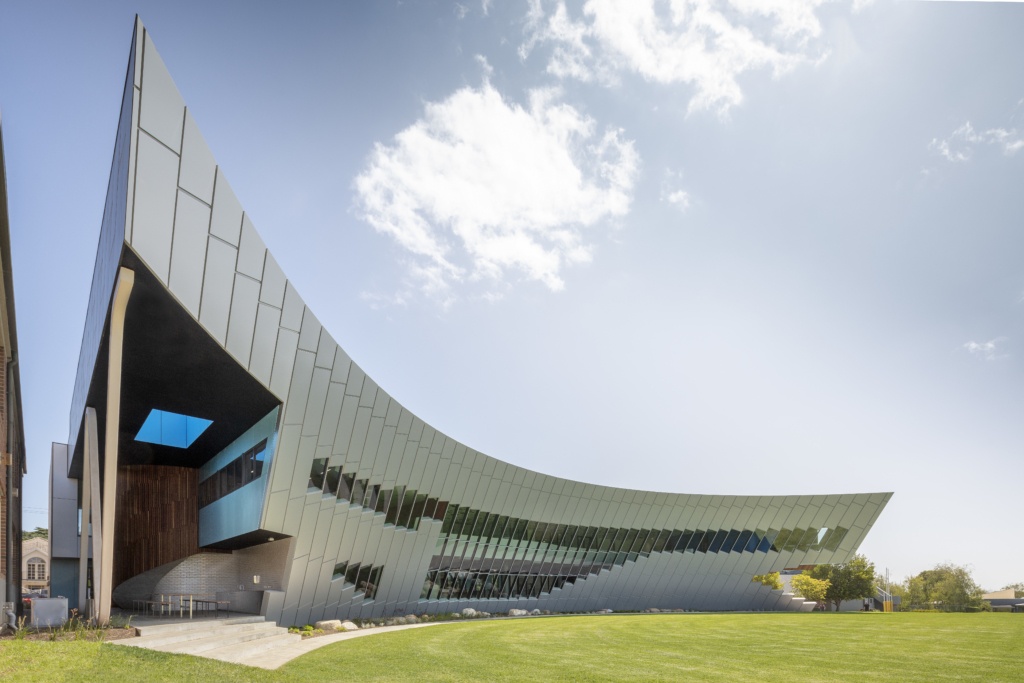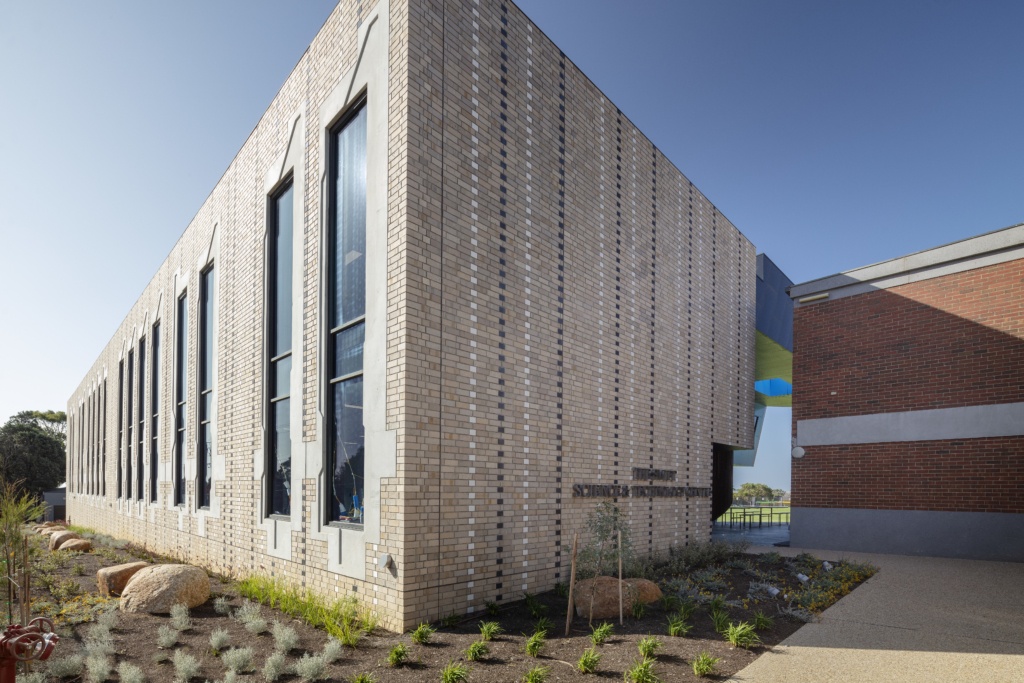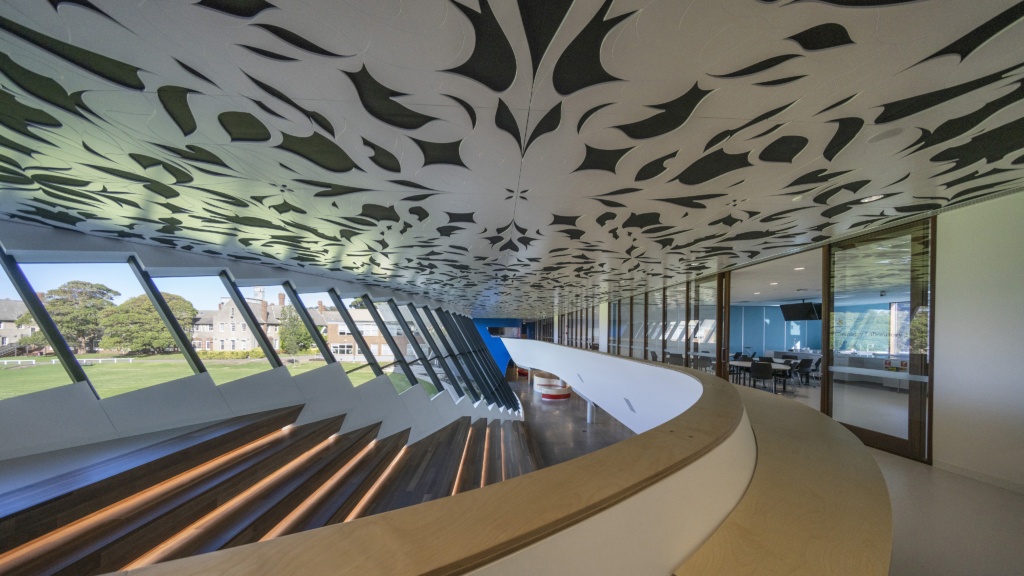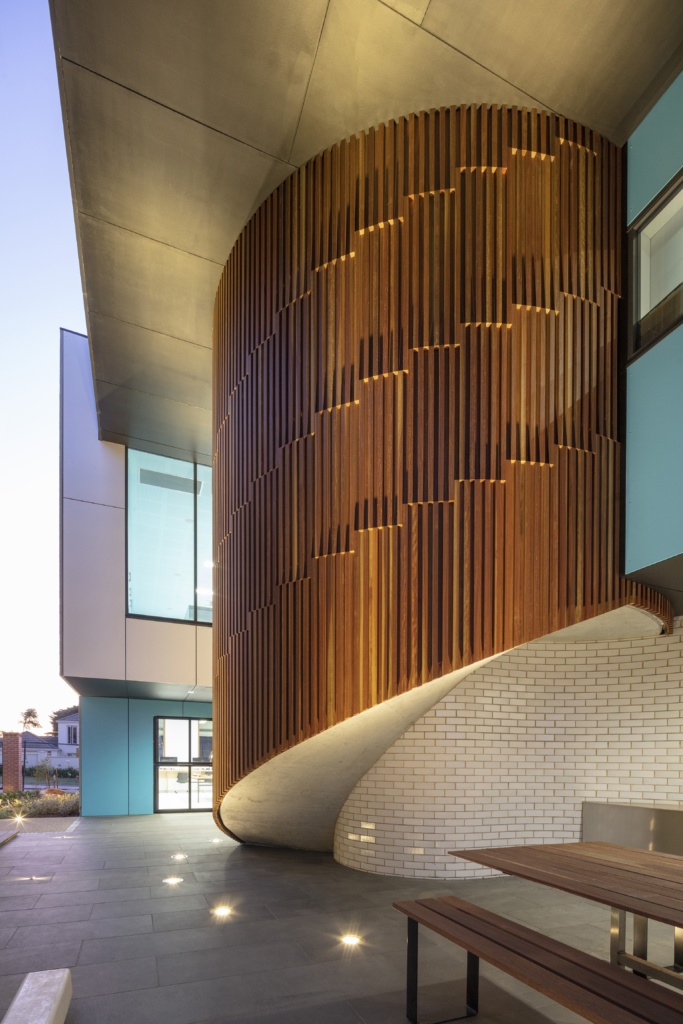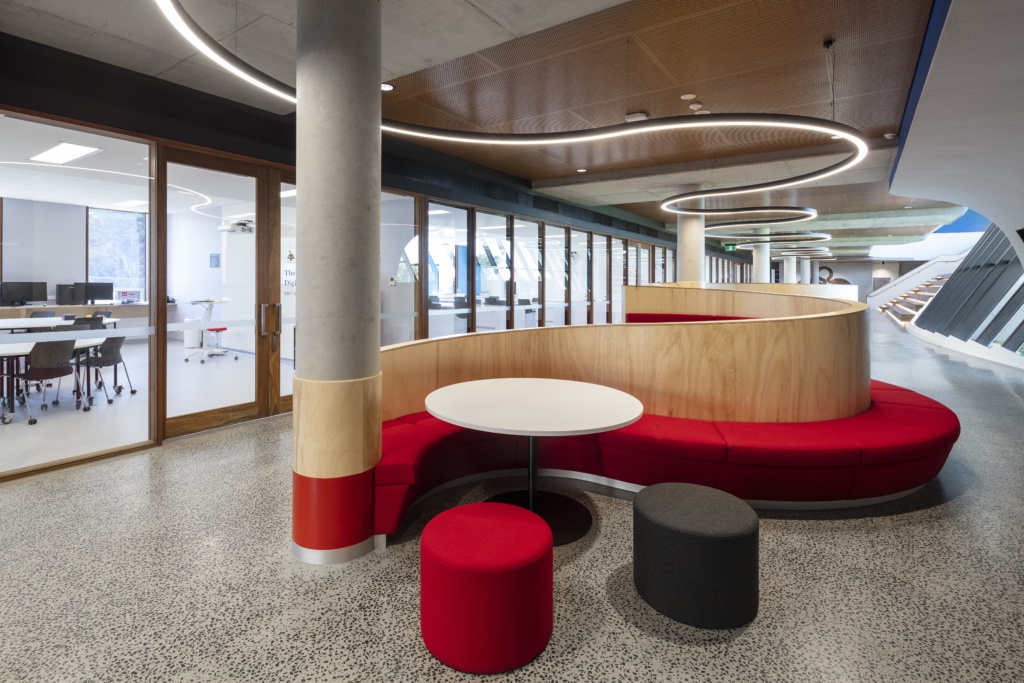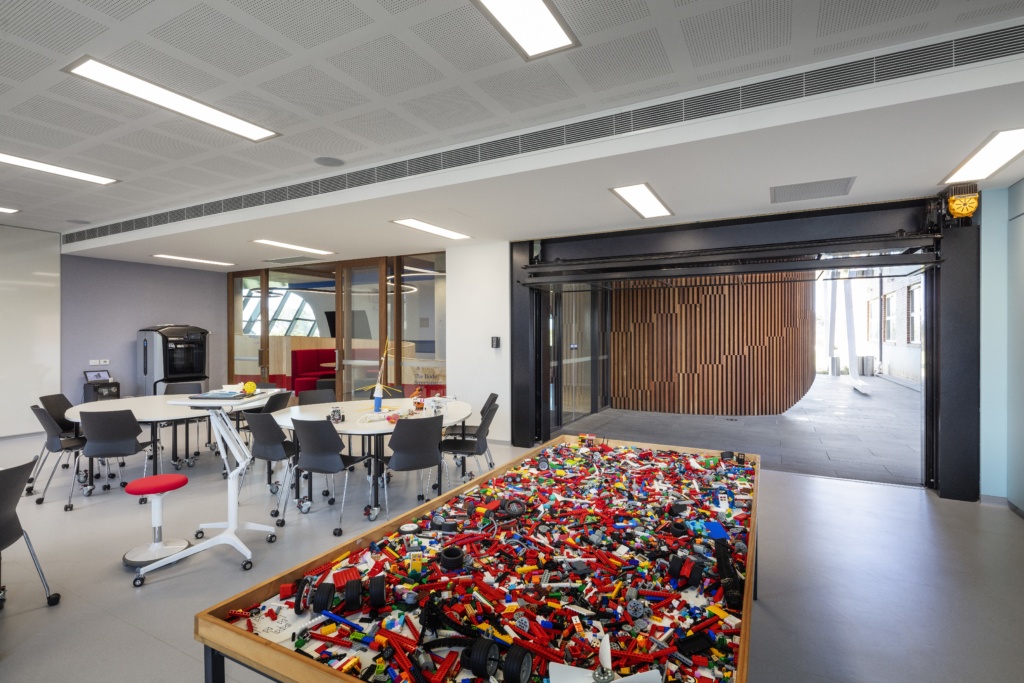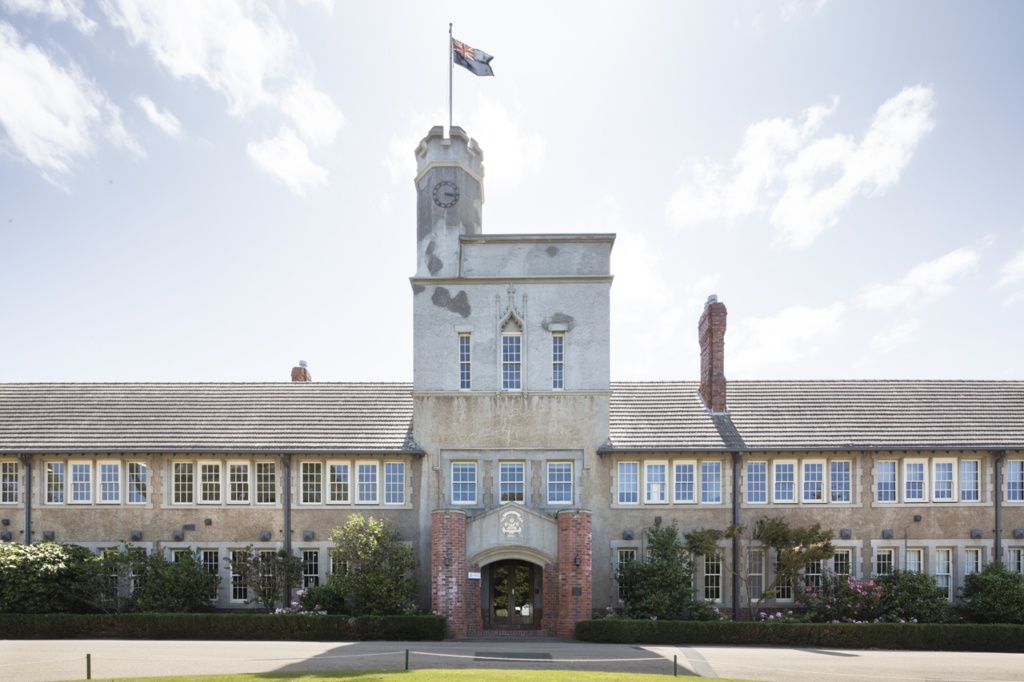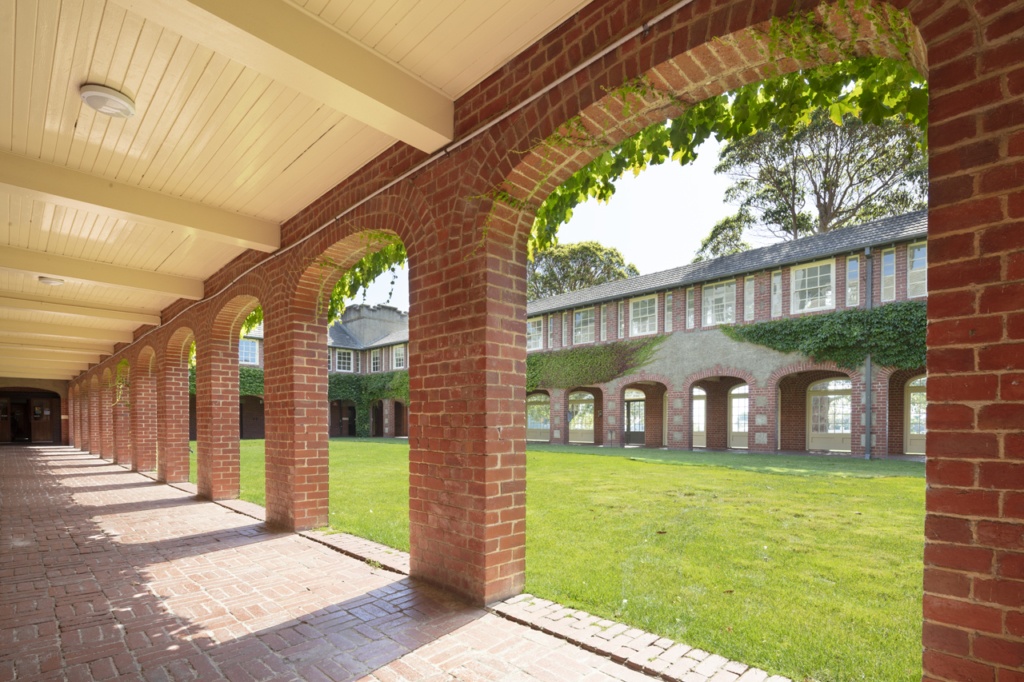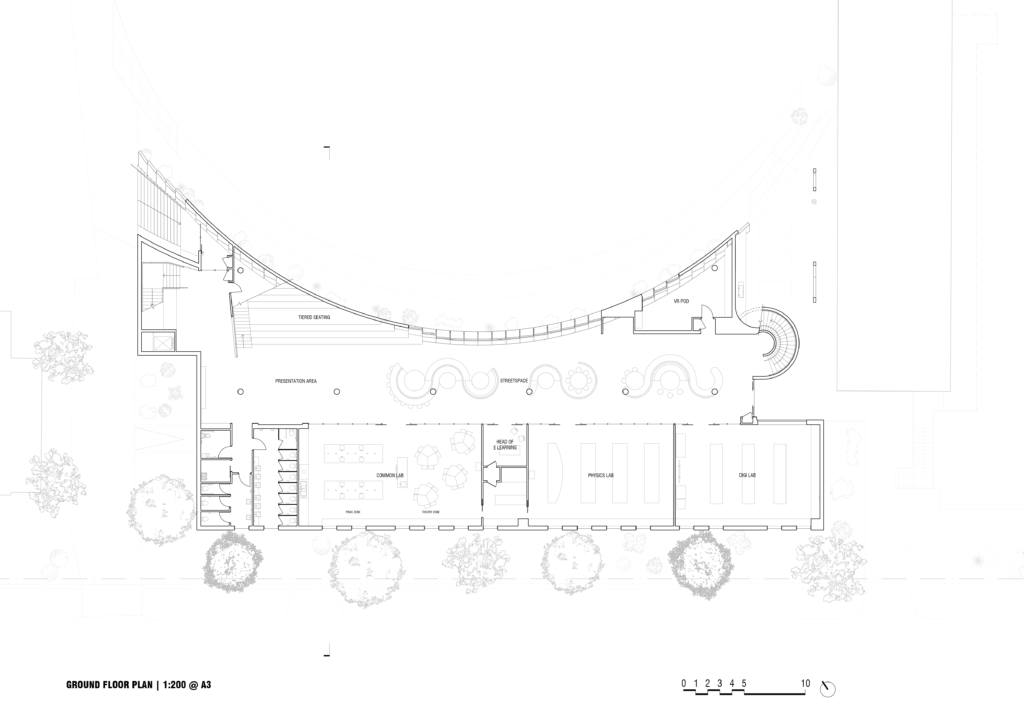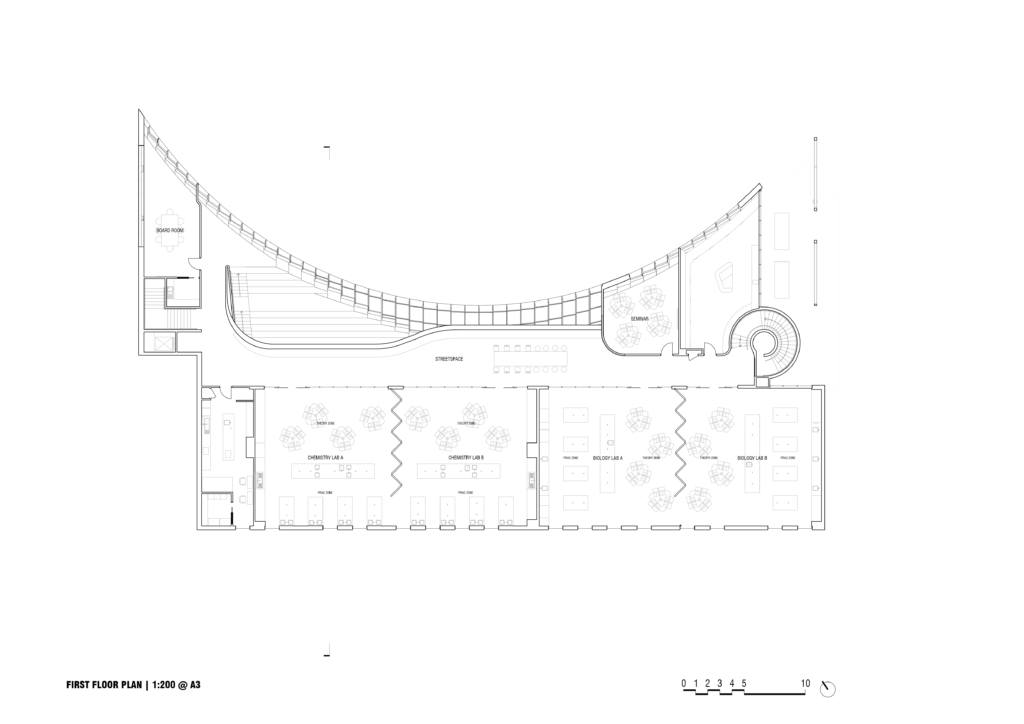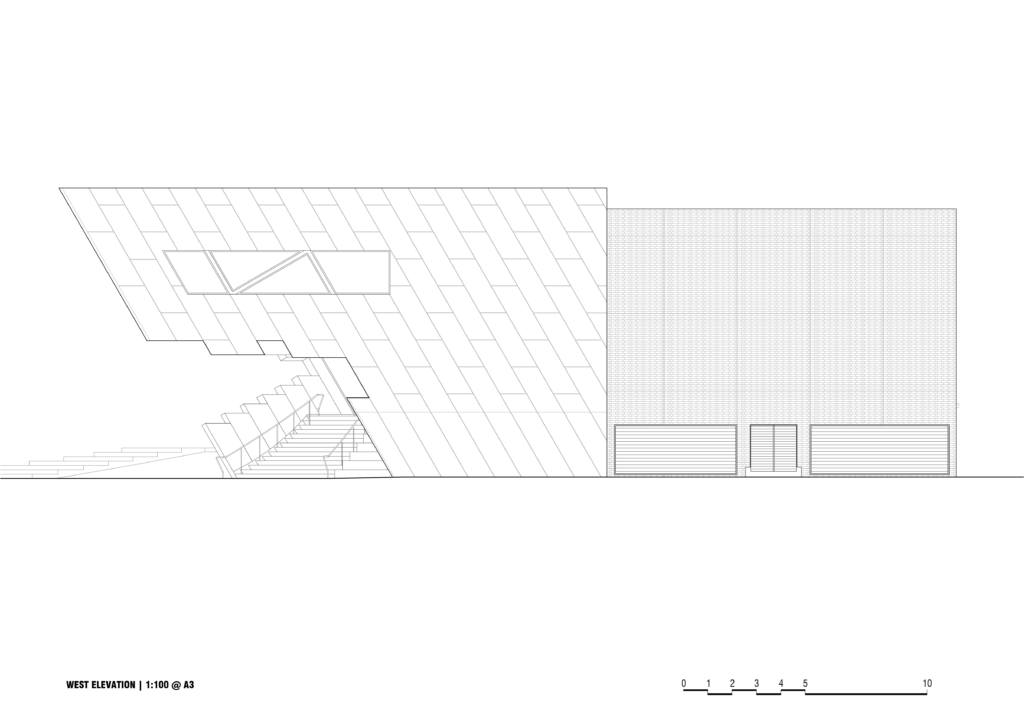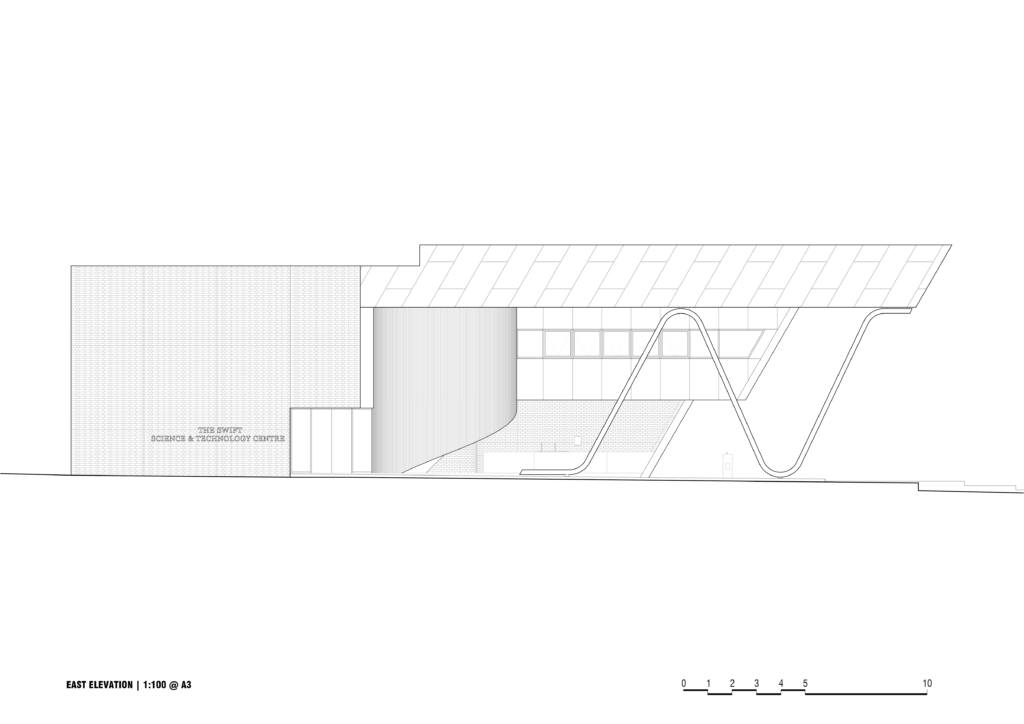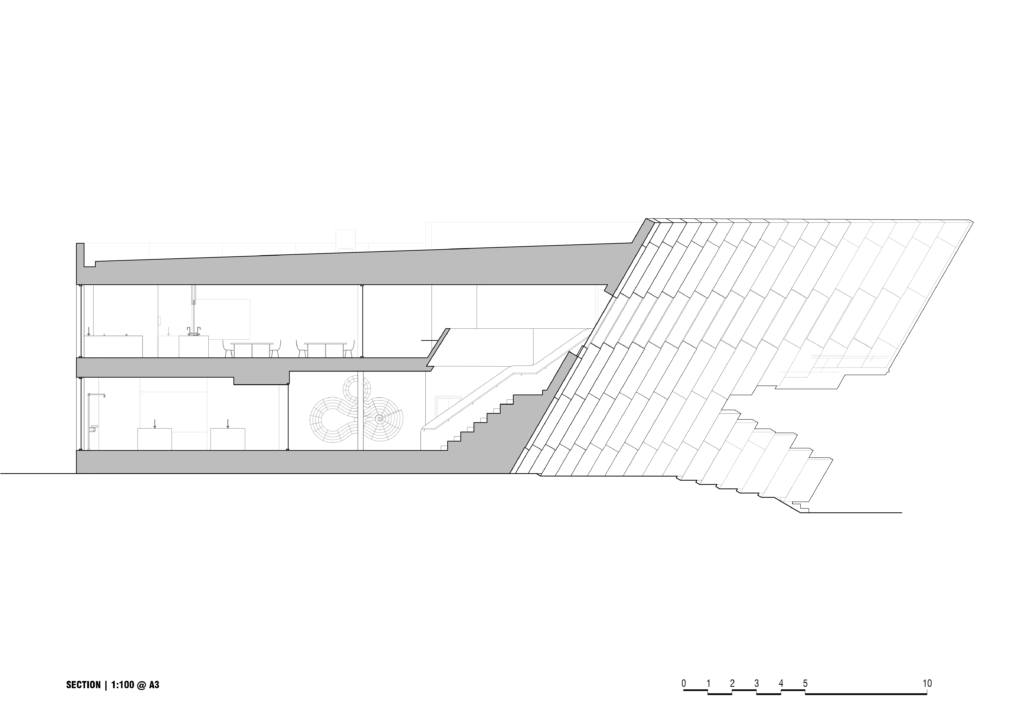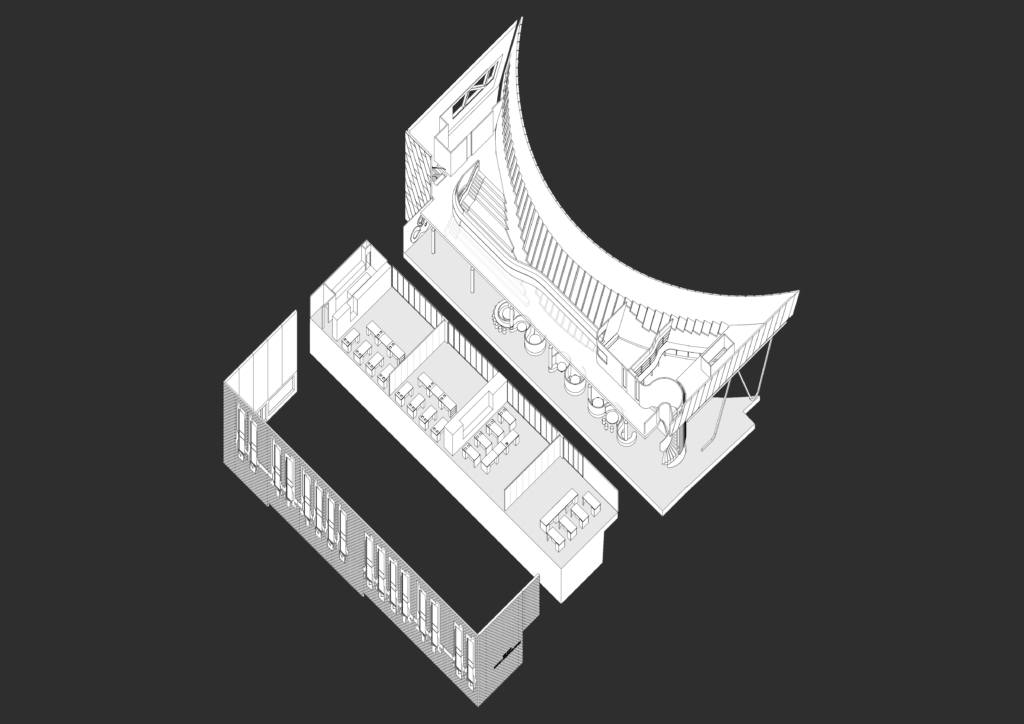Toorak College is an independent school established for girls in 1897. Unlike many inner-city schools, Toorak College’s more regional location at Mount Eliza affords it more space for expansive buildings and grounds. At establishment, the school left a legacy of high-quality design: originating from a masterplan by Hudson & Wardrop and landscaping by Edna Walling, the school features brick quadrangles interwoven with grass-surrounded long-walks through the campus.
The brief was to design a STEM educational building. With a sustained downward trend of women engaged in STEM fields, schools play a critical role in encouraging girls to enter the pipeline early. The new Swift Science and Technology Centre, building upon the original campus’ legacy, strives to inspire girls about the power of STEM and to prompt students to reconsider their abilities within STEM disciplines.
